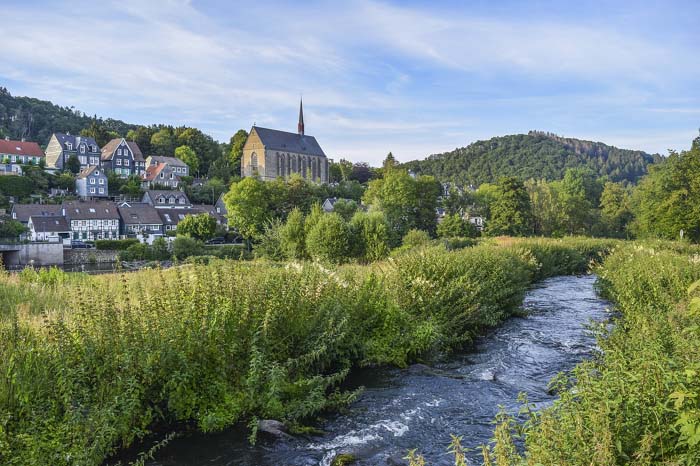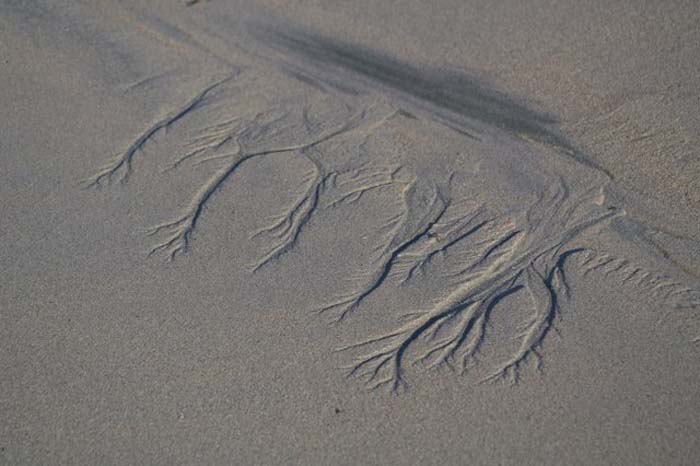
Water eventually makes its way to bigger bodies like oceans, lakes, and rivers via a complex system of natural channels called drainage patterns. Climatic, topographical, and geological factors all have a role in shaping these patterns. These, in turn, produce a wide variety of formations.
The geological structure beneath the surface is an important factor in determining drainage patterns. Various rock folds, faults, and types affect the movement of water across the landscape. One example is the tendency for water to flow in linear patterns along fractures and joints in areas with resistant rock layers. The opposite is true for softer rocks, which can erode more readily and cause dendritic and irregular drainage patterns.
Here are some factors that determine drainage patterns.
Topographic, climatic, and geological factors shape river networks’ drainage patterns. Some important factors to consider are:
Time and Erosion
The tectonic, deposition, and erosion processes that occur throughout geological time spans cause changes to drainage patterns. Over millennia, rivers can alter their course and cause changes in patterns. Canyons and valleys form due to erosion from waves, wind, or glaciers.
Topography
How fast and in what direction water flows depends on the land’s gradient and slope. Treelike or dendritic drainage systems, in which tributaries intersect the main river channel at sharp angles, are common on steeper slopes. Mild inclines can cause drainage patterns that are rectangular or parallel.
Vegetation
Rainfall interception, soil erosion, and infiltration rates are just a few ways vegetation impacts these patterns. River channels may become braided or meandering when dense vegetation reduces surface runoff and promotes infiltration. Over time, changes in land use and deforestation can influence drainage patterns.
Climate
Factors such as evaporation rates, temperature variations, and rainfall patterns affect the amount and frequency of water flow. Dendritic patterns are more common in areas with heavy rainfall. This is due to the abundance of surface runoff in these regions. Radial drainage patterns are common in arid locations. This can be attributed to transient streams or infrequent rainfall. It causes rivers to flow outward from a central point.
Human Activities
Modifications to natural drainage patterns can occur as a result of human activities, including channelization, the building of dams, and urbanization. Many urban areas have complex man-made drainage systems that change the paths of rivers. Rivers can have their flow reduced by dams. This can alter downstream drainage patterns and create reservoirs.
Geology
The underlying geological structure greatly influences these patterns. The different permeability levels of different types of rocks affect the flow of water. For example, sandstone may allow more groundwater flow than impermeable rocks like granite. This results in more runoff and surface flow.
Structural Control
When geological processes like folding and faulting form natural channels or barriers, they can affect the course of rivers. For instance, water may preferentially flow along fault lines, leading to linear drainage patterns.
When these characteristics are clear, environmental scientists, hydrologists, and geologists can better understand drainage patterns. They can then apply this knowledge to conservation efforts, water resource management, and land use.
How do you identify drainage patterns?
The term “drainage patterns” describes how water naturally moves across a landscape. These patterns can reveal a lot about a place’s hydrology and geology. The following are some ways to recognize various drainage patterns:
- Deranged Pattern
A deranged pattern may emerge in areas that have recently gone through a glacial period or have complicated geology. This pattern’s streams run irregularly, disorganizedly, with no discernible pattern. This can be attributed to recent landscape irregularities or geological changes.
- Trellis Pattern
In regions where bands of rocks with different levels of resistance are visible, a trellis design is common. The main rivers run parallel in the valleys that separate the resistant rock formations, with their tributaries joining them at right angles.
- Radial Pattern
It is common for streams in mountain regions with domes or volcanic activity to radiate outward from a central peak. Around volcanic cones, streams eroding from a central point create this pattern.
 Rectangular Pattern
Rectangular Pattern
The pattern appears to be a grid-like structure consisting of straight intersecting streams. Areas, where streams run straight due to fractures, faults, or joints in the underlying rock, are most commonly home to this type of geology.
- Parallel Pattern
Streams may run parallel to one another as they swiftly drop steep slopes, like those found around mountain ranges. Areas devoid of vegetation and characterized by high gradients frequently observe this pattern.
- Dendritic Pattern
The majority of drainage systems follow this layout, which is reminiscent of tree branches. This happens in places where the geology is quite consistent. This means that the kind of soil or rock underneath has little effect on the water’s flow. This design depicts a system of interconnected tributaries formed by several rivers and streams.
It is common practice to use satellite images, aerial photos, or topographic maps in order to identify drainage patterns. One way to figure out the main drainage pattern in a given area is to look at the layout of the rivers and streams, the features in the landscape, and the places where the rivers and streams meet.
Benefits of drainage patterns
The natural and anthropogenic advantages of drainage patterns are numerous. The placement of streams and rivers in a given area determines these patterns. A few are presented here:
Historical and Cultural Importance
Many towns’ historical and cultural treasures lie in the streams and rivers that run through drainage patterns. They are significant cultural landmarks with symbolic, ceremonial, or spiritual significance.
Ecosystem Support
Many different kinds of animals and plants are able to thrive in the varied habitats provided by the streams and rivers that make up drainage patterns. These ecosystems play an important role in maintaining ecological balance by providing essential services like breeding grounds, shelter, and food.
Groundwater Recharge
Drainage patterns enable water to seep into the soil and recharge underground water reserves, replenishing groundwater aquifers. This is crucial to ensuring a steady supply of potable water in areas where groundwater is scarce.
Controlling Floods
Reduce the risk of flooding by directing runoff away from homes and businesses using strategically placed channels and floodplains that follow well-thought-out drainage plans. This saves lives while minimizing property damage.
Agriculture
Irrigation is easier thanks to drainage patterns, which supply water sources for farming. Agricultural output improves when controlled water flow is used. This enables more effective crop cultivation.
Generating Hydropower
Hydropower can be generated using rivers that are part of these patterns. Reservoirs and dams constructed along these rivers produce renewable energy. This lessens the need for fossil fuels and the effects of climate change.
Water Quality
The movement of sediment and contaminants is one-way drainage patterns affect water quality. Water quality for ecological purposes, recreational purposes, and human consumption can all be enhanced with well-managed drainage systems, reducing pollution.
Water Management
The purpose of drainage patterns is to control the flow of water and direct it away from flood-prone locations. By preventing erosion and waterlogging, drainage patterns maintain soil stability and fertility.
Tourism and Recreation
Drainage systems create picturesque landscapes and rivers that attract outdoor fans and tourists. Wildlife viewing, boating, fishing, and hiking boost the local economy and leisure options.
Navigation and Transportation
For a long time, rivers that are part of drainage patterns have been a vital means of transportation. They make it possible for people and things to go from one place to another. This boosts trade and economic growth.
These patterns are fundamental components of both the natural and built environments. This is due to their important roles in forming and offering societal benefits, supporting ecosystems, and shaping landscapes.
Conclusion
Knowledge of drainage patterns is essential for many applications, such as environmental conservation, accessing flood risks, and managing water resources. Water movement through landscapes can be better predicted, and actions can be taken. Analyzing these patterns will help reduce risks and protect ecosystems.
